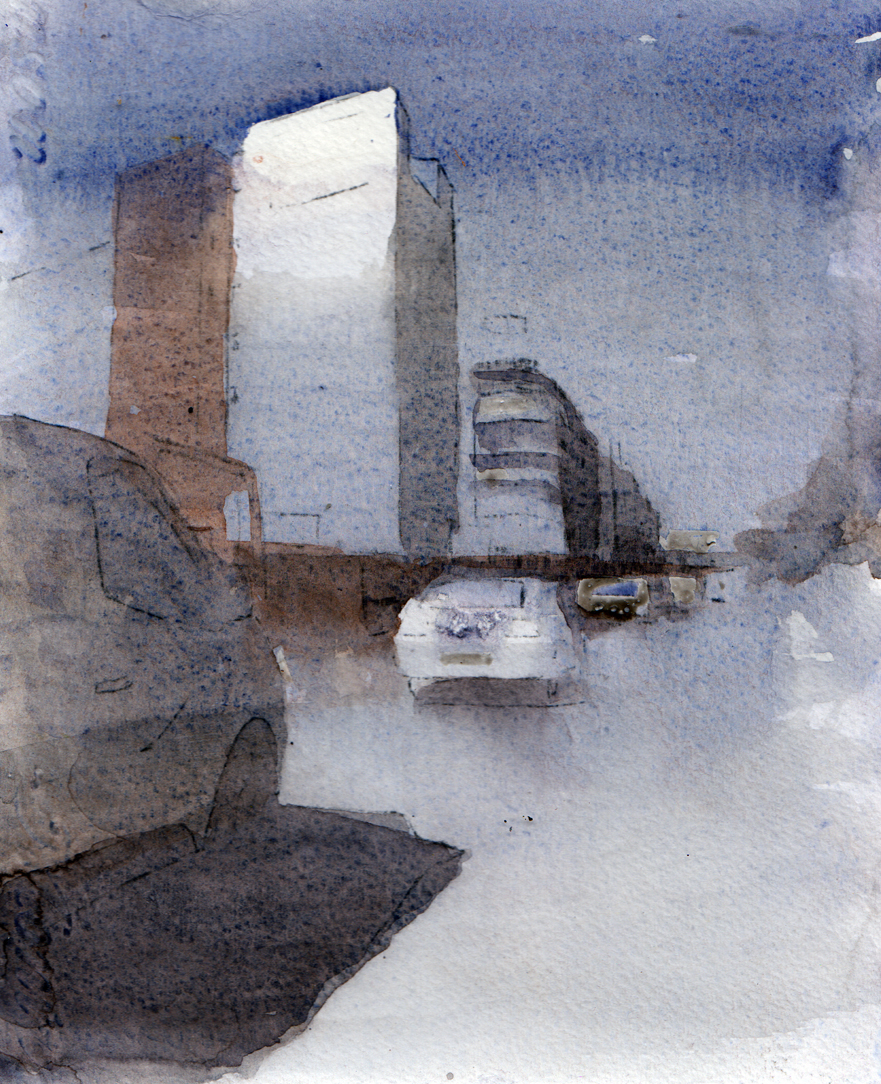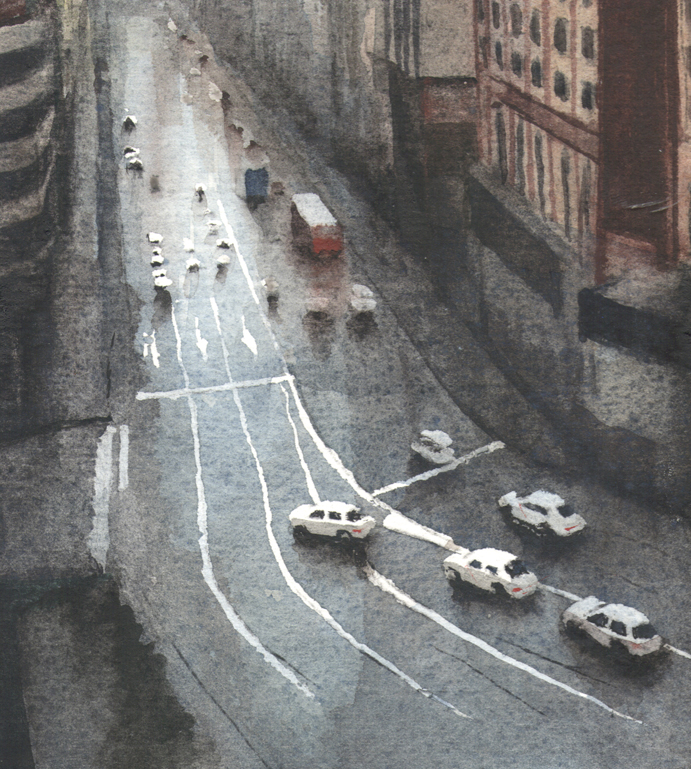From all painting techniques, watercolor is probably the most complex, since its execution involves difficult variables to control the water and absorption time.
Another feature that defines watercolor and differs it from the rest of the painting techniques, from an aesthetic point of view, is the possibility of applying color with immediacy and freshness, generating results with a specific fingerprint, impossible to match with any other.
The watercolorist normally begins the work with damp, usually heavyweight paper, over a rigid support. In this way you can drench the paper with water and work on large surfaces by pouring color for fluid effects such as water or clouds. After this stage, the watercolorist extends the drop with a soft natural hair brush to generate homogeneous colors such as houses or flats of the territory.
At the same time you can work with alternative tools that generate different tracks to the brush, such as sponges, rags, soft pencils, and even waxes or masking fluid to cover the white of the paper.
From a conservation point of view, and contrary to what many believe, watercolor works made with top quality materials have far superior conservation than oil or acrylic works, only needing to be framed and protected with a separate paper crystal to guarantee its conservation. Doing so, a watercolor will last for centuries.
Today many painters work in watercolor with their final works, giving them an entity to itself and a very distinguished finish, similar to Kreisler Gallery artists such as Juan Díaz, of whom you can find artworks at kreislerart.com and Manuel Huertas Torrejón.
- The blues of the painter’s palette - August 6, 2019
- Transfer para Texturas - December 10, 2017
- Transfer for Textures - December 10, 2017





